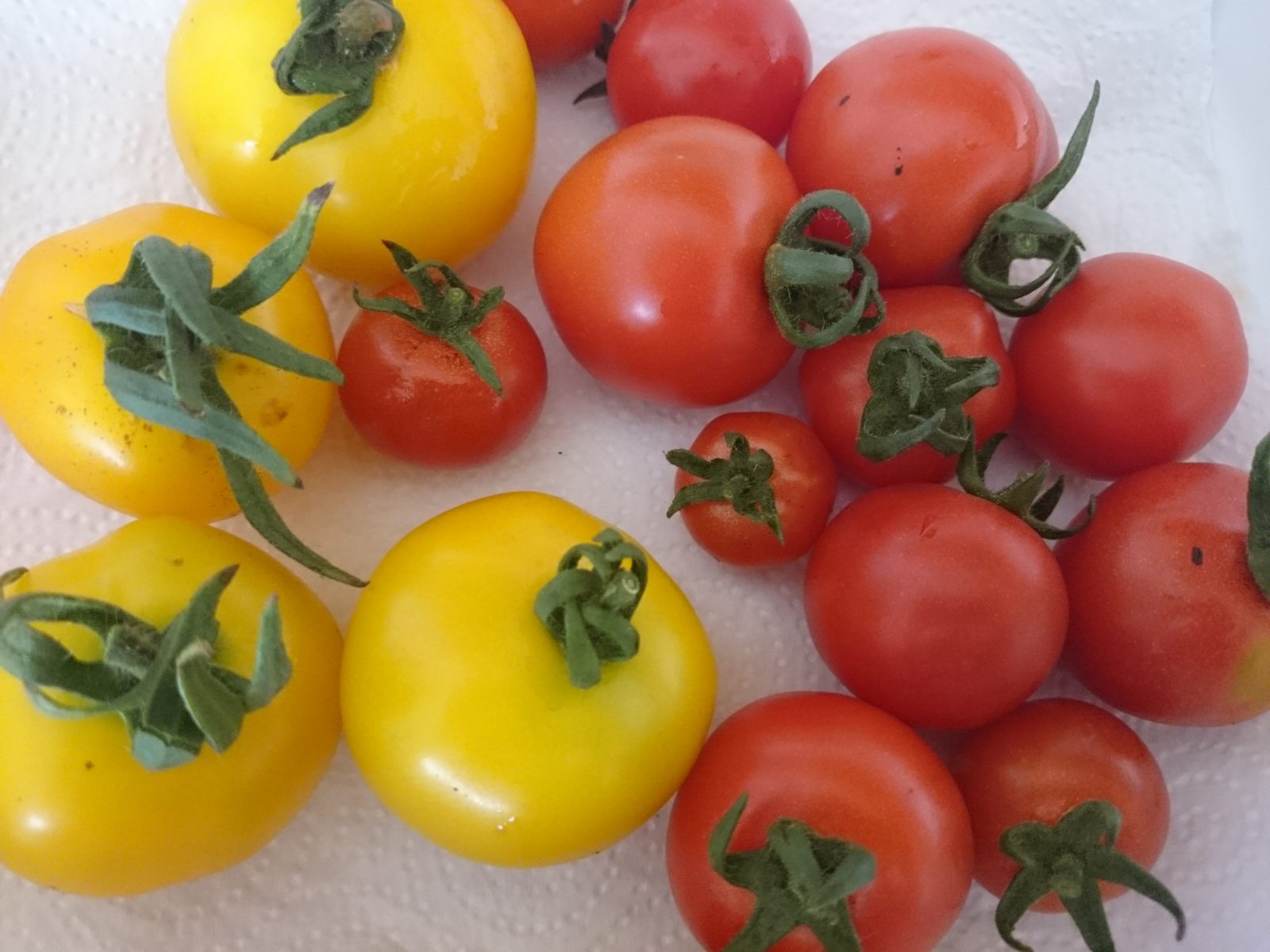
I’m posting this recipe in solidarity with all those affected by the earthquake in Italy last week which was centred on Amatrice. More than 600 restaurants across Italy have been putting pasta all’Amatriciana on their menus and donating €2 from each one sold to the Red Cross. If you are making the tomato sauce from scratch you will need to add another hour to the cooking time. This version is in The Geometry of Pasta by Caz Hildebrand and Jacob Kennedy.
Serves 4 as a starter, 2 as a main
Preparation time: 10 minutes
Cooking time: 10 minutes
Ingredients
200 g rigatoni or penne
120 g guanciale (cured pig’s cheek) or pancetta
a small pinch of crushed dried chilli
1/2 tsp ground black pepper
170 ml tomato sauce (see below)
90 g grated Pecorino Romano or parmesan, to serve
Method
Cut the guanciale or pancetta into 5 mm slices and then 1 cm batons. Whilst the rigatoni is boiling, place the guanciale in a frying pan over a high heat and fry until fiercely smoking and just starting to colour (it will release plenty of fat, which makes the sauce). Take the pan off the heat for a few moments (for safety’s sake), add the chilli flakes followed by the tomato sauce, 2 tablespoons of the cooking water and the black pepper. Bring back to simmering, add the drained pasta and serve with the grated cheese on the side.
Tomato sauce
Ingredients (for 600ml sauce)
3 cloves garlic, thinly sliced
6 tbsp extra virgin olive oil
a small pinch of crushed chilli flakes
500 g ripe vine tomatoes, chopped
500 g tinned tomatoes, chopped or crushed
1/2 rounded tsp fine sea salt
Method
Fry the garlic in the oil until it just begins to colour, then add the chilli flakes, then the tomatoes and salt along with a few grinds of black pepper. Cook at a brisk simmer until thickened – about an hour.
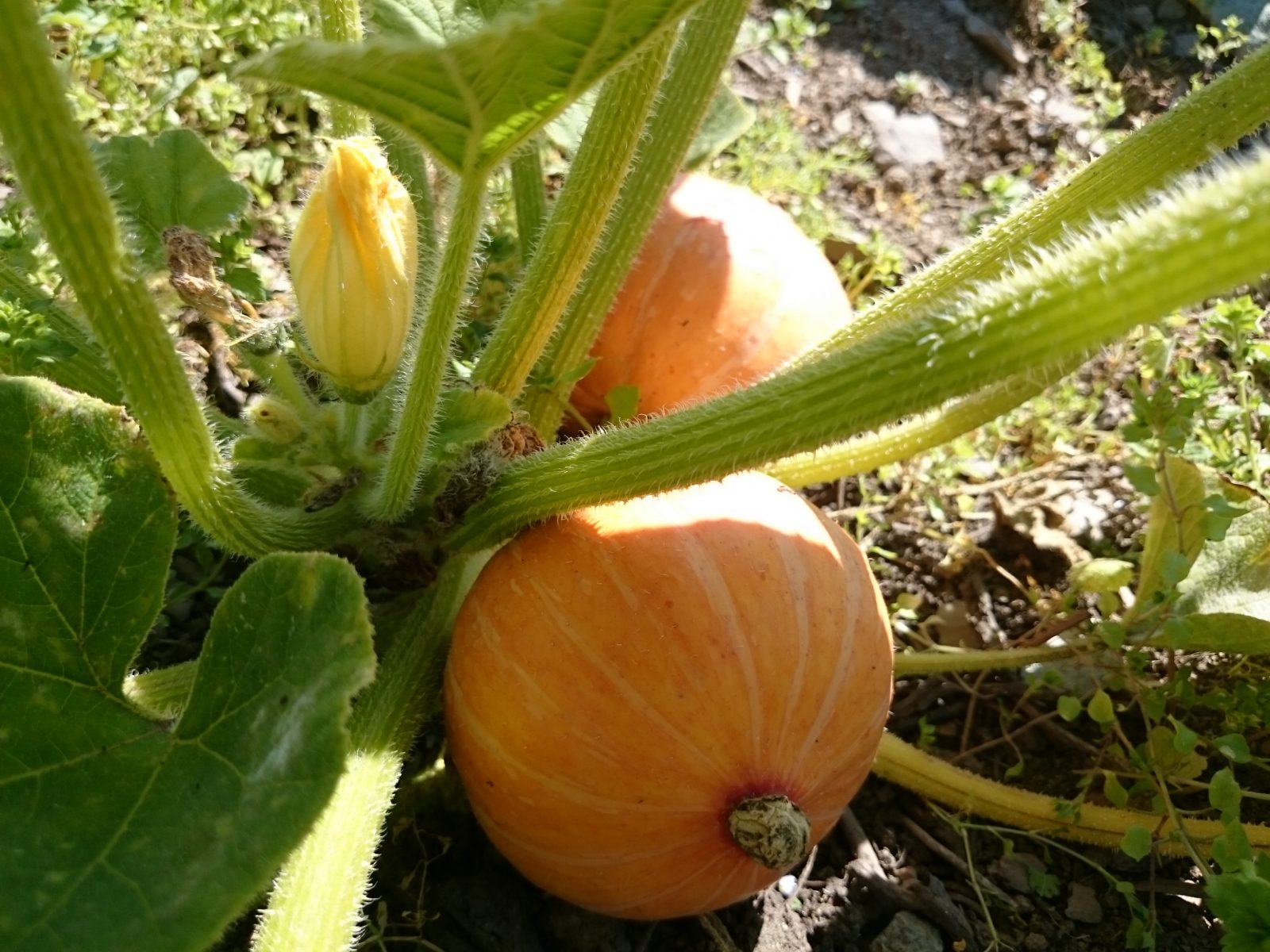
The compact Golden Nugget and green acorn squashes in our veg boxes this week are delicious cut in half, seasoned and roasted. You can enjoy them just as they are as a simple accompaniment to grilled chicken or sausages. The roasted halves are transformed into a more substantial main dish if you fill them with stuffing and roast for a further 15 minutes.
Serves: 4
Preparation time: 20 minutes
Cooking time: 45 minutes – 1 hour
Ingredients
2 Golden Nugget or acorn squash, cut in half lengthwise
50g butter
salt and black pepper
1/2 tsp ground nutmeg or cinnamon
Method
Scrub the squashes clean, then cut in half lengthwise. Remove the seeds and soft fibres and score the flesh with a sharp knife to ensure the heat gets to the inside. Dot the cavity with butter and season with salt, black pepper and the cinnamon or nutmeg.
Place the squash halves cut sides upwards in an ovenproof dish. Bake in an oven preheated to 200C/Gas 6 for 45 minutes until the flesh feels tender when pierced with a knife.
For the stuffing:
There are lots of easy ways to stuff squash once you’ve roasted them, depending on what ingredients you’ve got to hand. If you intend to stuff them, omit the nutmeg or cinnamon at the initial roasting stage.
Nigel Slater suggests a spicy caramelised onion filling.
Hugh Fearnley-Whittingstall recommends a blue cheese and walnuts or Gruyere cheese and crispy bacon filling.
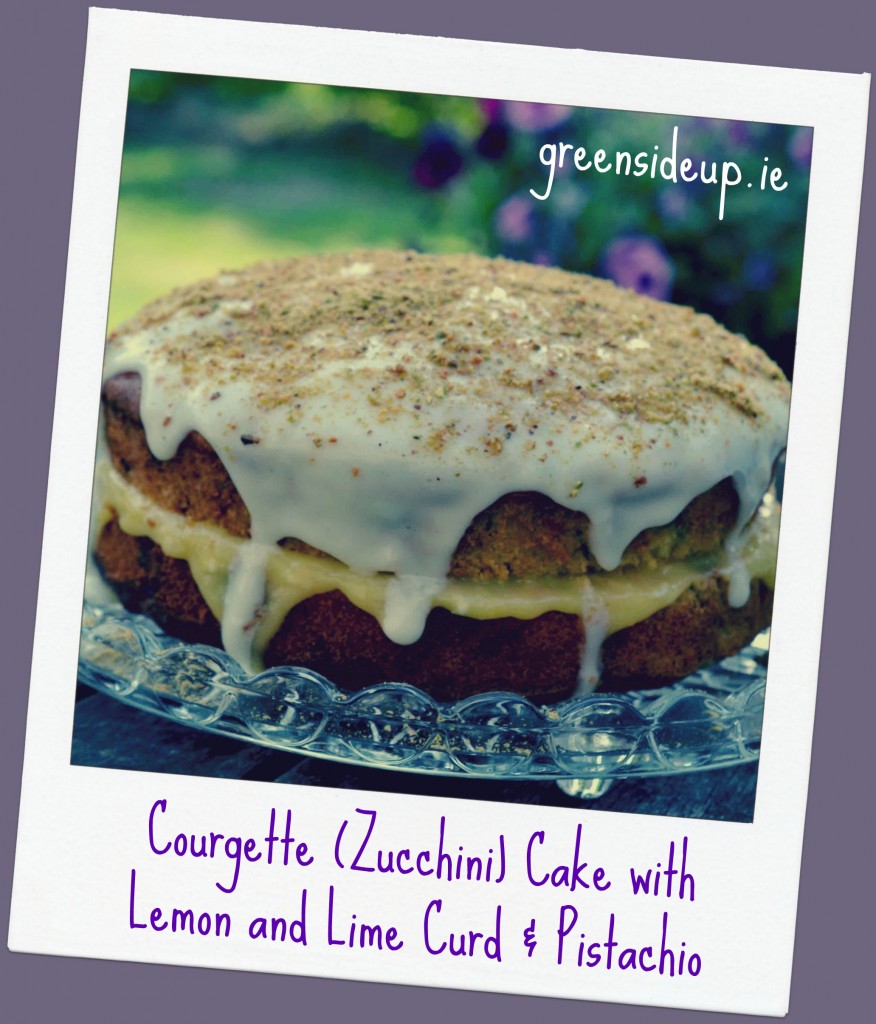
This luscious teatime treat was recommended by a friend on our Facebook page in a conversation about courgette olive oil bread. It comes from Nigella Lawson’s classic How to be a Domestic Goddess, and is reproduced here thanks to Irish community gardening guru Dee Sewell of Greenside Up.
Preparation: 30 minutes
Cooking time: 30 minutes
Serves: 8
Ingredients
60g sultanas, optional
250g courgettes (2-3), weighed before grating
2 large free range eggs
125ml organic rapeseed oil
150g caster sugar, sieved
225g self-raising flour
half teaspoon bicarbonate of soda
half teaspoon baking powder
lime curd for filling (buy in shop or make your own)
2 x 21cm sandwich tins, greased and lined
Method
If you’re using sultanas, put them in a bowl and cover with warm water to plump them up.
Wipe the courgettes with kitchen towel (don’t peel them), then grate. The coarse side of an ordinary grater is best as anything finer or smaller can make them mushy). When the courgettes are grated turn them into a sieve over the sink to remove excess water.
Put the eggs, oil and sugar in a bowl and beat until creamy. Sieve in the flour, bicarb and baking powder and continue to beat until well combined. Now stir in the grated courgette and add the drained sultanas.
Equally pour the mixture into the tins and bake for 30 minutes until slightly browned and firm to the touch. While they’re in the oven, make the icing. When baked, leave the cake in the tins on a rack for 5-10 mins then turn out and allow them to cool. Fill with lime curd and ice the top.
Lime and pistachio icing:
200g cream cheese
100g icing sugar, sieved
juice of 1 lime, or more to taste
2-3 tablespoons chopped pistachio nuts
Beat the cream cheese in a bowl until smooth, add the icing sugar, beating well to combine, then stir in the lime juice to taste. Sprinkle the pistachio nuts over the top.
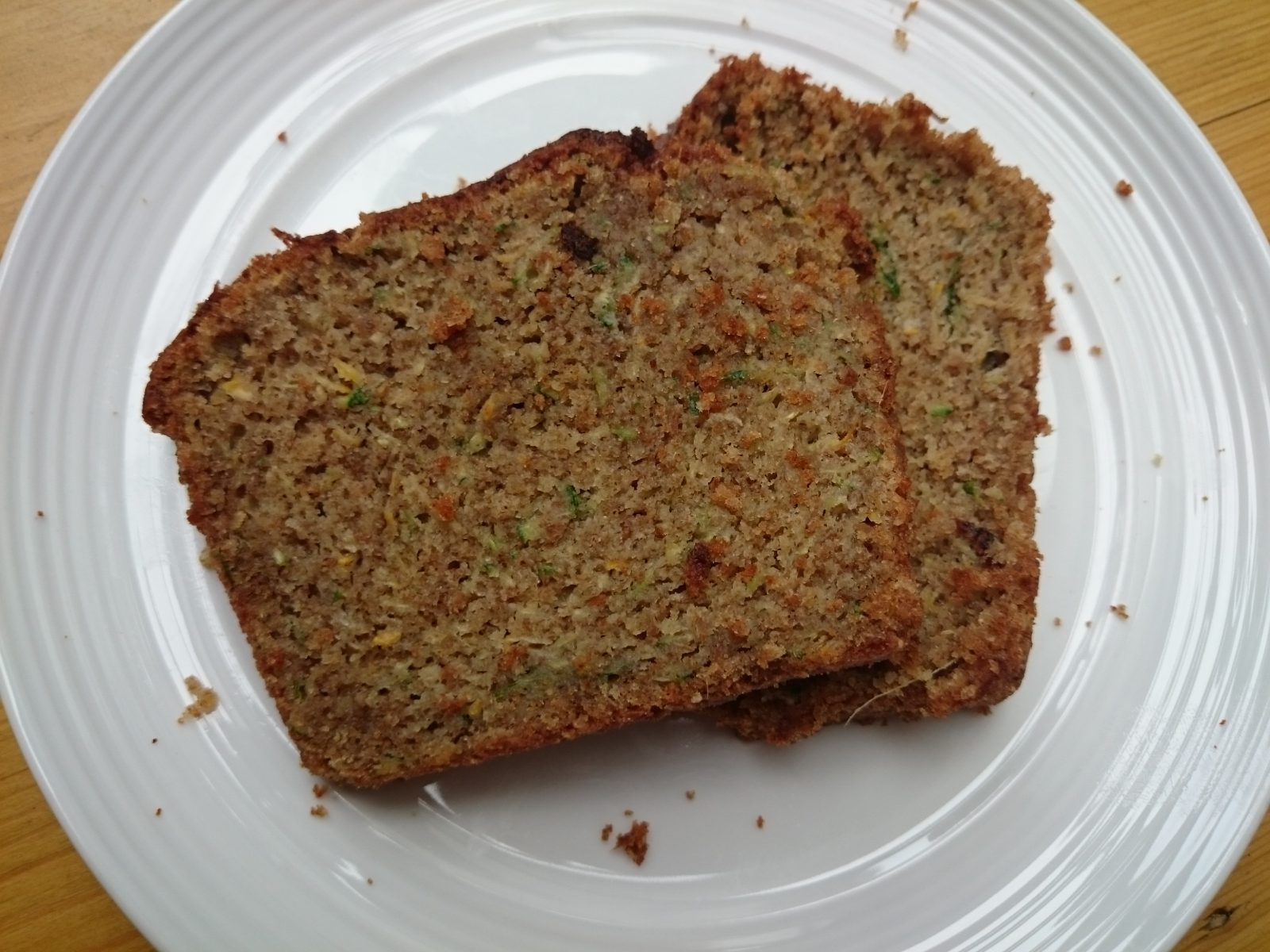
I fed this classic American loaf cake surreptitiously to a courgette-hating 11-year-old who gobbled it down and asked for a second slice. It really is delicious and ideal for summer outdoor eating.
This version from Claire Ptak of Violet Bakery in east London uses cardamom and ginger root, others prefer nutmeg and cinnamon.
It’s worth noting that our veg box courgettes don’t need salting to leach out the excess liquid, as they’re small and freshly picked. If you buy your vegetables from a supermarket though, beware.
Makes 1 900g loaf
Preparation time: 20 minutes (longer if you salt the grated courgettes)
Cooking time: 50 minutes
Ingredients
500g courgettes, grated
[1 tsp salt]
butter, for greasing
280g wholemeal flour
½ tsp bicarbonate of soda
½ tsp baking powder
¼ tsp ground cardamom
200g olive oil
200g light brown sugar
3 large eggs
1 tbsp vanilla
70g knob of ginger, peeled and grated (around 50g after peeling)
Method
[Grate the courgette and toss with the salt. Put in a colander over a bowl, and allow the liquid to leach from the courgettes for 3 hours, or overnight. You will lose around 150g in liquid.]
Set the oven to 200C/400F/gas mark 6. Butter and line a 900g (2lb) loaf tin with parchment.
Sift the flour, bicarbonate of soda, baking powder and cardamom together. In a separate bowl, whisk the oil, sugar, eggs, vanilla and ginger together. Add the drained courgette. Stir in the dry ingredients, mixing until just incorporated.
Tip into the prepared loaf tin, and bake for around 50 minutes, or until the bread is golden and springs back to the touch.

My husband in his quest to create the perfect sourdough pizza adapted a recipe from London pizzeria Franco Manca‘s book Artisan Pizza To Make Perfectly At Home. They use wild broccoli or friarelli, but Frank used chard from this week’s veg box. Choose your favourite pizza base (Frank makes a sourdough base from scratch but you might prefer to buy one!) and then cook the pizza as you would normally.
Serves 4
Preparation time: 15 minutes
Cooking time: 30 minutes
Ingredients
4 pizza bases
200g chard leaves
1 tbsp olive oil
1 garlic clove, crushed
1 red chilli, finely chopped
sea salt
For the tomato sauce:
1 can plum tomatoes, ‘mashed’ by hand and ‘lumpy bits’ removed
1 garlic clove, finely grated
1 tbsp olive oil
1 mozzarella cheese
black olives
basil leaves
Method
To make the tomato sauce, heat the oil in a pan, ad the grated garlic and fry gently for 2-3 minutes. Add the tomatoes and cook until reduced by about 50%. Remove from the heat and leave until needed.
In another pan, heat the olive oil and fry the garlic and chilli over a medium heat. Add the chard leaves, some salt and a drop of water and cover. Cook for about 4 minutes. Drain well and squeeze excess water from the leaves before using.
Spread the tomato sauce over your pizza bases. Lay some chard down on the pizzas and then top with mozzarella, olives and basil. Cook the pizzas in your usual way.
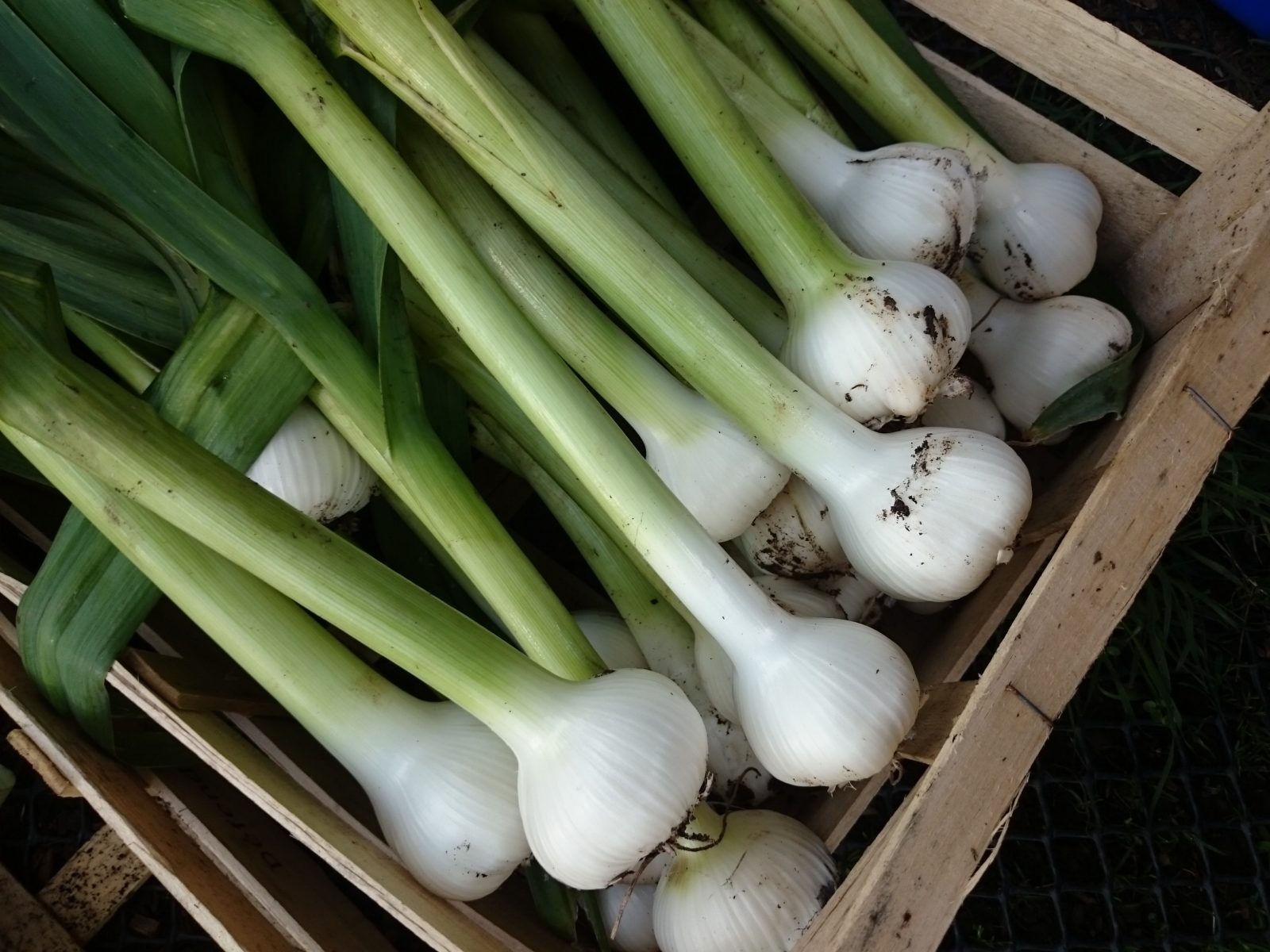
“Arguably the best and simplest way to enjoy elephant garlic. Just roast it whole!” says Colin Boswell of The Garlic Farm on the Isle of Wight.
Preparation time: five minutes
Cooking time: one hour
Ingredients
1 bulb elephant garlic
olive oil
salt and pepper
Method
Preheat the oven to 200C. Chop your elephant garlic bulb in half horizontally. Drizzle the exposed cloves with olive oil and sprinkle with salt and pepper.
Put the bulb back together, loosely enclose in foil and place in the preheated oven. Depending on the size of the bulb it will take between 40 minutes and 1 hour to roast.
Turn down the oven to 180C and leave for an extra 30 mins to get a more caramelized flavour. Once roasted it can be simply spread on bread, served as a side to barbecued or roasted meats or added to sauces and soups.
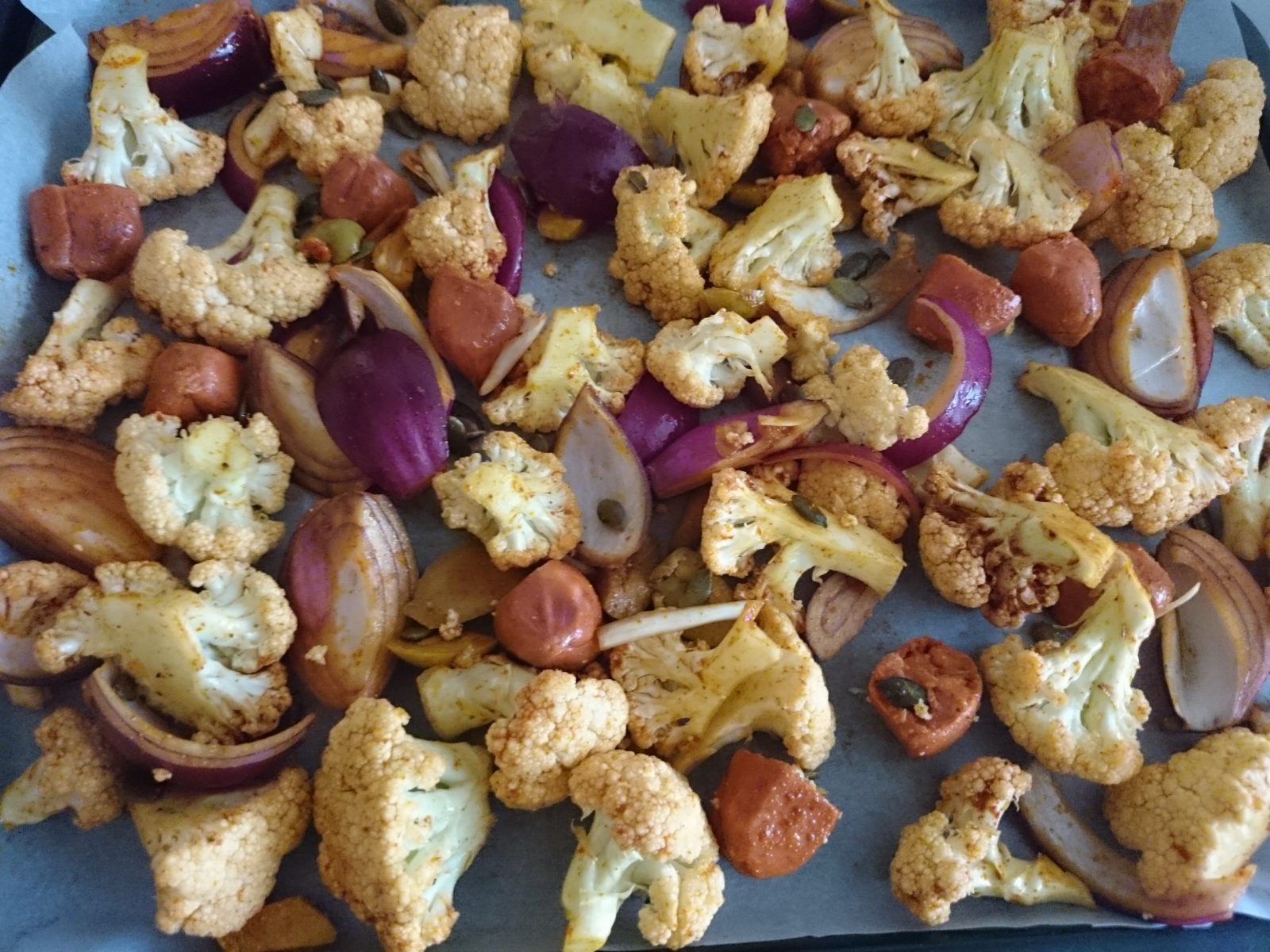
This is a really tasty side dish from food guru Yotam Ottolenghi in his Easy Ottolenghi series in The Guardian. For a change he’s cut back on his usual long list of ingredients!
He says: “I’ve been using chorizo a lot recently, as a quick way to add intensity to all sorts of vegetable dishes, but this also works very well without it; if you do leave it out, increase the paprika to about a tablespoon.”
Serves: four to six as a side dish
Preparation time: 10 minutes
Cooking time: 25-30 minutes
Ingredients
1 large cauliflower (1kg), trimmed and separated into 3-4cm florets
150g cooking chorizo, skinned and cut into 2cm pieces
2 red onions, peeled and cut into 2cm wedges
30g pitted green olives, torn in half
2 tsp sweet smoked paprika
30g pumpkin seeds
2 garlic cloves, peeled and crushed
3 tbsp olive oil
Flaked sea salt and black pepper
20g parsley leaves, roughly chopped
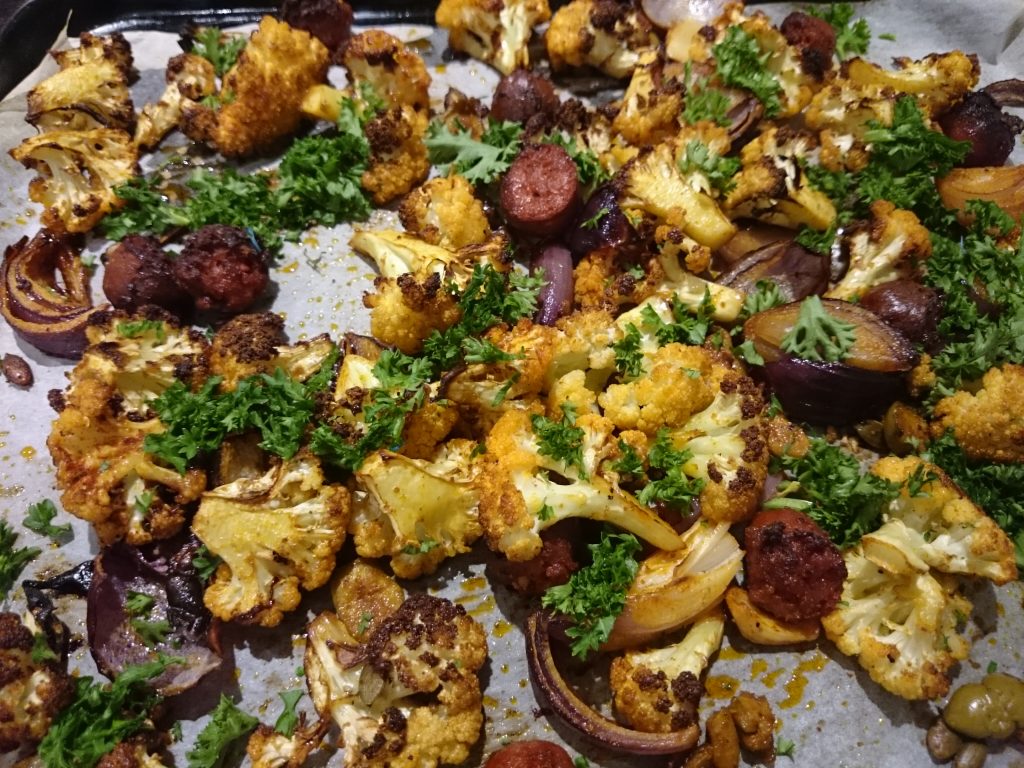
Method
Heat the oven to 220C/425F/gas mark 7. Put everything bar the parsley in a bowl with a teaspoon and a half of salt and a good grind of pepper. Mix well to combine, then spread out on a 30cm x 40cm baking tray lined with greaseproof paper.
Roast for 25-30 minutes, stirring gently halfway through, until the chorizo is cooked and the cauliflower is soft and browned. Leave to cool down for about 10 minutes, stir in the parsley and serve.
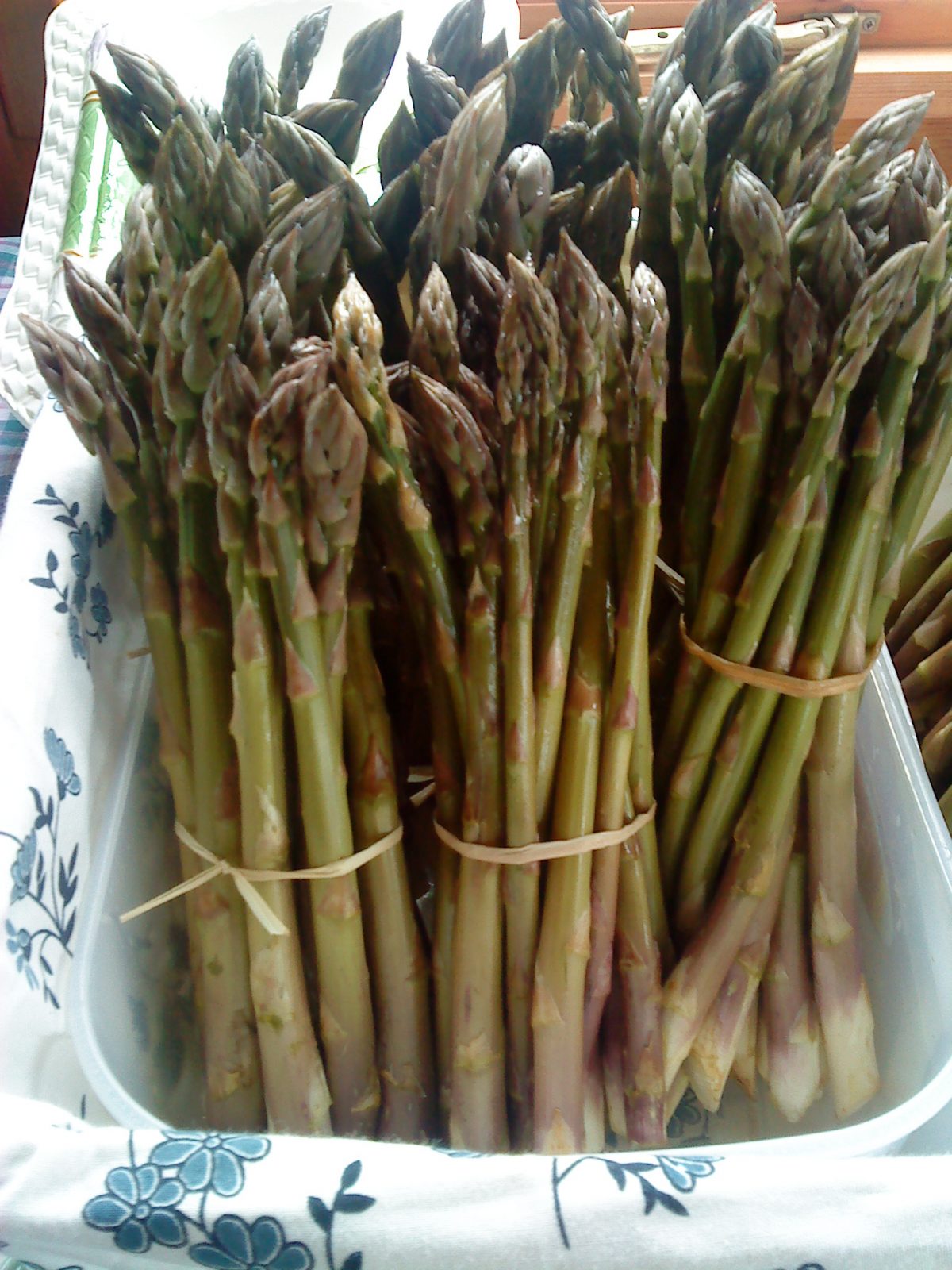
I might have been tempted to make this recipe from Hugh Fearnley-Whittingstall’s River Cottage Veg Every Day! for lunch today had we not already eaten the broad beans out of this week’s box!
Serves 4
Preparation time: 10 minutes
Cooking time: 10 minutes
Ingredients
12-15 asparagus spears, trimmed
200 g baby broad beans (podded weight)
A bunch spring onions, trimmed
2 Tbsp olive oil
4 large slices sourdough bread (or other robust bread)
1 garlic clove, halved (optional)
Extra virgin olive oil, to trickle
50 g mild, crumbly goat’s cheese
sea salt and freshly ground black pepper
Method
Bring a pan of salted water to the boil, add the asparagus spears and blanch for two minutes. Scoop them out and drain. Let the water come back to the boil. Now add the baby broad beans and blanch for 30-60 seconds until tender, then drain.
Slice the spring onions on the diagonal into 1-2 cm pieces. Heat the olive oil in a frying pan over a medium heat, add the spring onions and fry fairly gently for 2-3 minutes, until just beginning to soften. Cut the asparagus spears into 2-3 cm pieces and add, along with the broad beans, to the spring onions in the pan. Add salt and pepper and toss the whole lot together over the heat, for just a minute, then take off the heat.
Meanwhile, toast the bread. Rub very lightly with the cut garlic clove, if you like. Trickle the toast with a little olive oil. Crumble the goat’s cheese over the veg in the pan and stir very lightly again. Pile this veg mixture on to the toast, trickle with a touch more olive oil and serve.
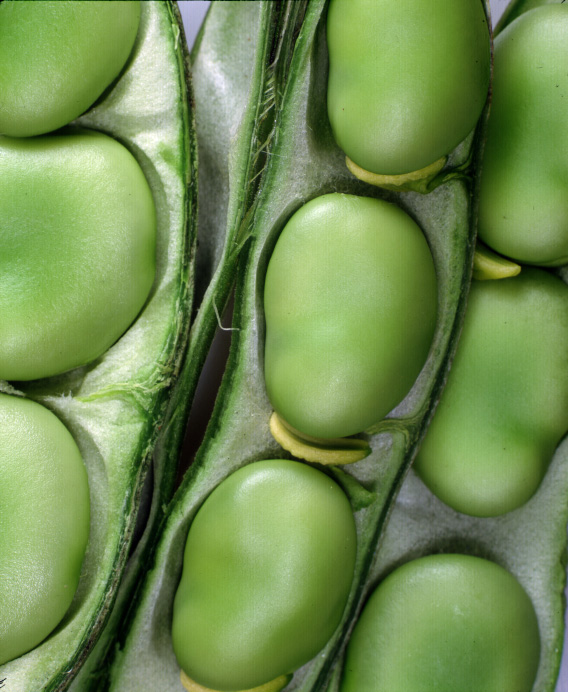
This is from Hugh Fearnley-Whittingstall’s River Cottage Light and Easy. It takes the classic seasonings of chorizo sausage and mingles them with fresh fish to create a gloriously red, richly-flavoured dish.
Serves 4
Preparation time: 40 minutes
Cooking time: 7-8 minutes
Ingredients
700 g white fish fillets, such as pollack, coley, whiting or haddock skinned and boned
1 Tbsp unsmoked paprika
1 tsp sweet smoked paprika
a small pinch of cayenne papper
2 tsps fennel seeds
2 garlic cloves, sliced
2 tbsps rapeseed or sunflower oil, plus a little extra for cooking
150 g cooked broad beans, skinned if they are large
Juice of 1/2 lemon
sea salt
a little roughly shredded mint (optional)
Method
Check the fish for pin bones, prising out any you find with tweezers, then cut into roughly 2 cm chunks. Put into a bowl with the spices, garlic and oil. Add a pinch of salt. Turn together and leave for half an hour in the fridge.
Heat a large frying pan or wok over a medium-high heat. Add a trickle more oil, then the fish, and cook, tossing often, for 4-5 minutes, until cooked through. Stir in the broad beans and cook for another minute. Squeeze over the lemon juice and remove from the heat. Taste and add more salt if needed.
Divide between bowls and serve, with some fresh mint sprinkled over if you like. Serve with rice, flatbreads or potatoes if you want a heartier supper.

This easy to make cheesecake is from Hugh Fearnley-Whittingstall’s River Cottage Fruit Every Day.
Preparation time: 30 minutes
Cooking time: 25-45 minutes
Chilling time: 4 hours
Serves 8
Ingredients
For the rhubarb:
400 g rhubarb, trimmed
75 g caster sugar
finely grated zest and juice of 1/2 orange
For the biscuit base:
85 g butter, melted, plus extra for greasing
200 g ginger biscuits
For the filling:
400 g cream cheese
3 balls preserved stem ginger, finely chopped plus 3 Tbsp syrup from the jar
25 g caster sugar
finely grated zest and juice of 1/2 orange
200 ml double cream
Method
For the rhubarb, preheat the oven to 150°C/Gas Mark 2. Cut the rhubarb into 4 cm lengths and place in a wide oven dish, ideally in one layer. Sprinkle with the sugar, orange zest and juice.
Cover the dish with foil and bake for 25-45 minutes (stirring carefully to turn the pieces over after the first 10 minutes), until tender and juicy (check the rhubarb after 25 minutes – and regularly thereafter – poking it with the tip of a small knife).
Leave to cool completely, then drain off the juice (it’s delicious, so save to pour over ice cream or use in a drink or smoothie). Lightly butter a 20-23 cm springform cake tin, line the base with baking parchment and lightly butter the paper.
To make the base, blitz the biscuits in a food processor (or bash in a bag with a rolling pin) until fairly fine. Pour the melted butter through the feed tube, pulsing as you go, until the mix looks like wet sand. (Or mix the butter with the bashed crumbs in a mixing bowl.) Tip into the prepared tin and press in firmly with the bottom of a glass so you get an even layer. Chill the base while you make the filling.
For the filling, beat the cheese, ginger, ginger syrup, sugar, orange zest and juice together until well blended. Add the cream and beat until the mixture thickens enough to hold its shape. Spoon on to the biscuit base and spread into an even layer.
Chill for 4 hours or overnight, until firm. Run a thin knife around the edge of the cheesecake and release the side of the tin. Serve with the cold baked rhubarb on top or on the side.


